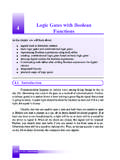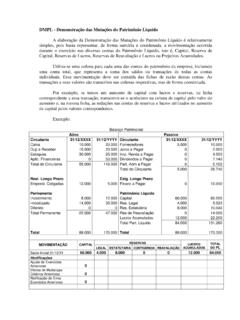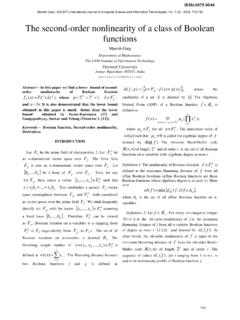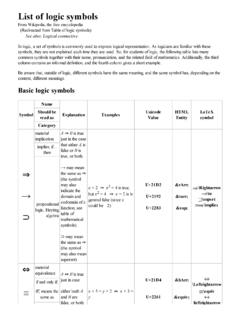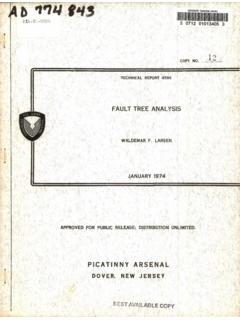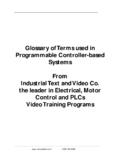Transcription of From Shanghai to Bristol - Boolean Maths Hub
1 DfE / NCETM UK / Shanghai Maths Exchange Programme Shanghai Maths From Shanghai to Bristol The UK Shanghai DfE / NCETM Mathematics Teacher Exchange Programme: September / October 2014 Mike Eatwell, Fishponds CE Academy Sal Edwards, Begbrook Primary Academy DfE Research programme 70 teachers and school leaders Two weeks in schools and Shanghai Normal University Teachers came to the UK in Nov / Feb 15 A city of 24 million people The best performing schools in Maths in the world in the PISA tests What did we see? Happy, well-adjusted children! Often large classes with classrooms mainly in rows. Why is their Maths so good? Variation and Intelligent Practice 2 7 5 9 4 1 6 3 8 5 Careful consideration of examples to deepen understanding. Quick movement from concrete to pictorial to abstract. Feel it, see it Lots of practical and real life contexts.
2 Single focus Time spent on a single topic so it is understood in depth. Reasoning Tell me how you Why? Why? Why? Thinking and unpicking misconceptions was a key feature. Lesson design 35 minute lessons Small chunks Short sharp contextual learning, moving quickly to the core / abstract mathematics New, exercise, review Teach the misconceptions Patterns and rules Calculation sharing ideas Children demonstrate their workings. Text books careful consolidation Textbooks are rarely a feature of Primary classrooms these unlike in China where they structure the day s learning and consolidate practice. Much fewer, more carefully thought through examples. Exercises are constructed with great care to build deep knowledge and to address any misconceptions. How do UK textbooks compare to Chinese Textbooks? Large numbers of topics in Year 1 in the UK version. Much more limited set of content in the Chinese textbooks.
3 A a Assessment and feedback Teachers constantly ask questions to assess what children know and understand. Teachers mark in the lesson, rather than in the evening, then use this information to plan the next day. CPD A weekly Maths planning session how often do UK teachers plan like this? It s usual practice to be observed by a number of people in order to improve pedagogy. There are even state and national teaching competitions! What can we learn from Shanghai ? What did we implement in OUR schools? Observations of Chinese teachers; Termly shared staff meetings; Commitment from each of the heads of the schools involved that we would ALL use these techniques in our classes; Training for subject leaders, teachers, trainee teachers, and teaching assistants; Working towards a shared calculation policy; Shared and agreed procedures for new assessment and moderation; Mastery statements on our websites if you come to our school, this is what you would expect to see.
4 Term 1 Term 2 Term 3 Term 4 Term 5 Term 6 Place value Addition and subtraction Multiplication and division Fractions Measurement, Geometry and Statistics Time spent on a single topic so it is understood in depth. Curriculum Design and National Curriculum expectations: Keeping the class together The majority of pupils will move through the programmes of study at broadly the same pace. The expectation is that most children achieve the learning. Means all pupils being taught the same concept at the same time. Keep up sessions. Different differentiation. Teach the misconceptions; Shorter lessons with a Keep up session; Small chunks to the lesson; Use of concrete to pictorial to abstract; Fewer, carefully thought through examples. Lesson Design By questioning; By variation; By intelligent practice; By problem solving; By reasoning; By using manipulatives; By adding in challenge.
5 Going Deeper Deepening: Variation Showing different representations provides learners with opportunities for deeper understanding. Which supports deeper learning? Why? Deepening: Intelligent Practice Deepening: Problem-solving Stimulating mathematical problems will naturally encourage deepening. NCETM document: Teaching for Mastery (Mike Askew, Sarah Bishop, Clare Christie, Sarah Eaton, Pete Griffin & Debbie Morgan) ..is fundamental to knowing and doing Maths ; ..enables children to make use of all of their other mathematical skills; ..is the glue that helps Maths make sense. Deepening: Reasoning Remember, the answer is only the beginning! Why? Why not? How do you know? How did you get your answer? What does the (*) mean? Why do you (*)? Can you (*)? Why is he/she wrong? NCETM: Progression Map / Reasoning = 40% True or false? Why?
6 Always, sometimes, never: Multiples of 5 end in 5. Which is the odd one out? Why? 10 3 12 9 How have I sorted these shapes? 1 2 Text Books Careful consolidation.

